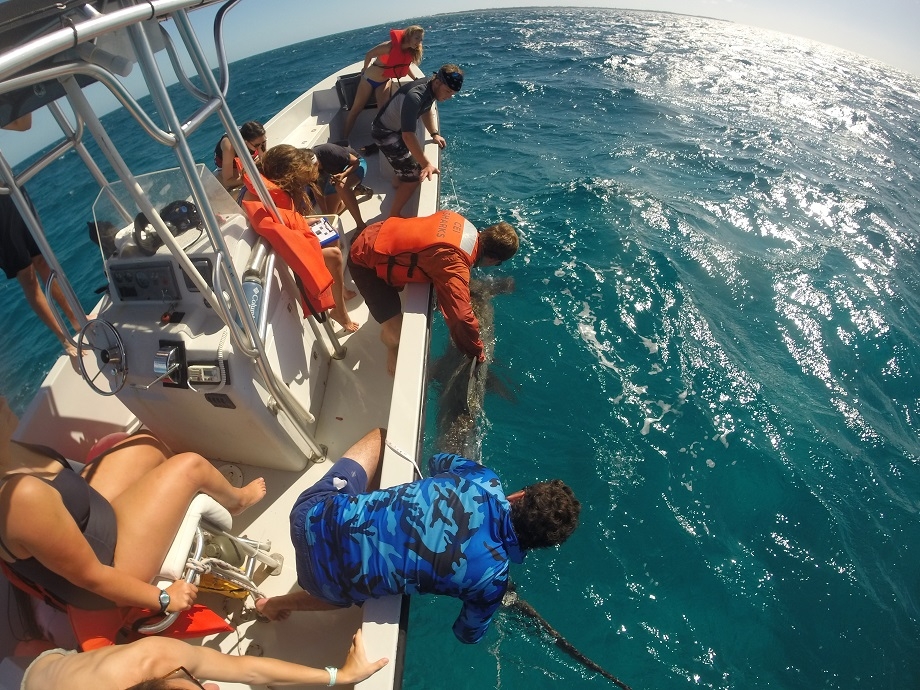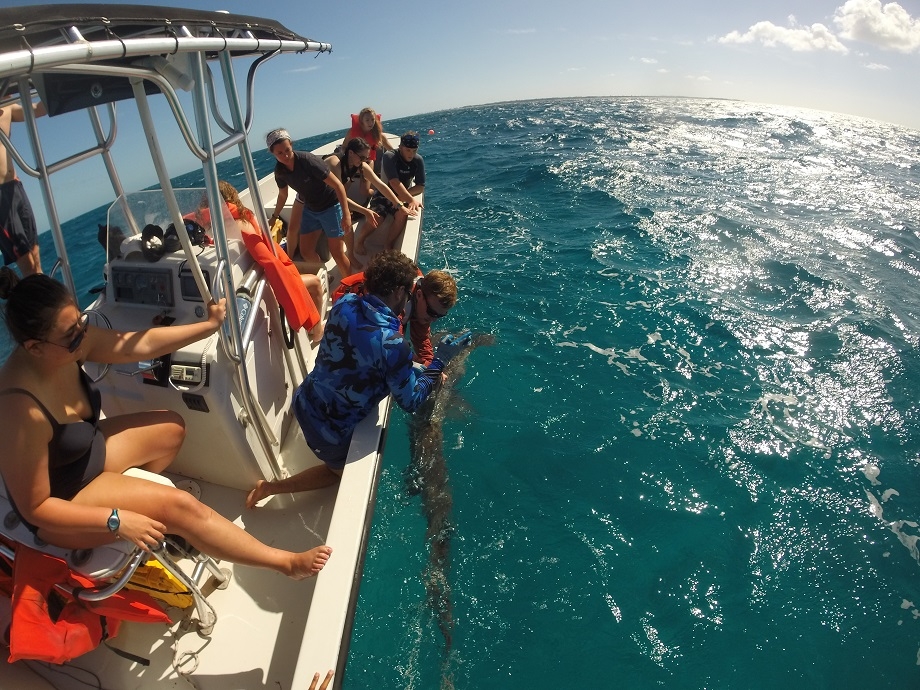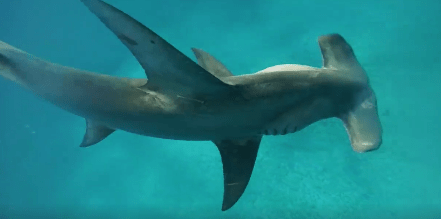On Wednesday, 3rd February, the Shark Research and Conservation Team captured and sampled only the fourth ever Great Hammerhead shark (Sphyrna mokarran) caught off of Eleuthera in the entirety of the program’s ten-year operation. During a shark ecology and handling class for the Cape Eleuthera Institute’s Gap Year Program, led by Research Assistant Oliver Shipley and Educational Assistant Cameron Raguse, the students were able partake in a rare experience in handling one of the most data-deficient sharks found in The Bahamas. Increasing our understanding of sharks in The Bahamas is important to ensure the most applicable and effective management of these keystone apex predators.
Hammerhead sharks (Sphyrnidae) are a morphologically distinct family of elasmobranchs comprising of nine species, and are found in temperate and tropical waters around the globe. They have evolved a unique dorso-ventrally compressed and laterally expanded cephalofoil that allows them to expand their field of sight and pin down prey items such as stingrays. Their common diet consists of molluscs, annelids, crustaceans, teleosts, and even other elasmobranchs. Great Hammerhead’s (Sphyrna mokarran) reach up to 3.5 m and weigh up to 230 kg. They are a highly migratory and solitary species that lives in coastal-pelagic waters near continental shelves. They are known to migrate from tropical to more temperate waters during the summer months to seek cooler water, and have been observed using offshore habitats including deep-water.
In The Bahamas, the biological and economic importance of sharks has been well recognized, leading to the 2011 amendment to the Fisheries Resources (Jurisdiction and Conservation) Act (Chapter 244), establishing The Bahamas as a National Shark Sanctuary. This declaration has provided thorough protection for a plethora of shark species, through the banning of commercial fishing and transport of shark related products into or outside of the approximately 630,000km2 that encompass The Bahamas.
This Great Hammerhead was captured during one of the shark team’s routine experimental longline surveys. The goal of this work is to gather tissue samples, such as muscle, fin and blood from a wide range of coastal elasmobranchs, to determine their diet, and subsequently the scale to which they perform important ecological controls. The experimental longline consists of a 500m ma equipped with 40 gangions which terminate in baited hooks and are supported by flotation buoys. Lines are soaked for a total of 90 minutes before being retrieved.
In addition to collecting tissue samples, the team also took measurements, a DNA sample, and attached two identification tags. This work-up procedure was completed in less than five minutes before the animal was safely released. A video of the release can be found on our Instagram page (@ceibahamas).

